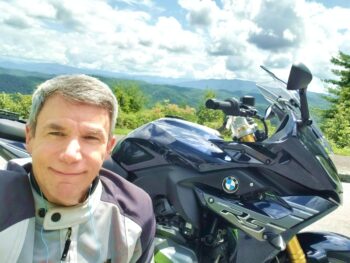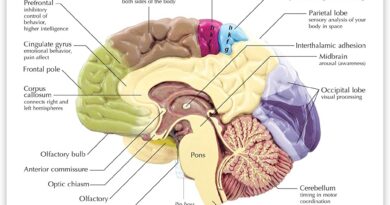The incredible disappearing motorcycle
Motorcycles produce a multitude of wonderful sensations. This cornucopia includes visceral delights like the throbbing power pulses of an accelerating big-twin, the oscillating g-forces generated by a series of s-turns, and the ever-changing textures of a trail surface transmitted vividly—yet comfortably—through well-tuned suspension. There are visual features to admire, whether standing nearby or perched in the saddle: brilliant chrome, exotic carbon-fiber, gorgeous paint, or exquisite lines. Auditory offerings range from basso profundo rumbling to turbine-like howls, each delivering its own special version of aural satisfaction. Some riders even appreciate the smells associated with their motorcycles, such as the acrid scent of two-stroke exhaust. Controls putting up a tiny bit of buttery-firm resistance before moving slickly, smoothly and positively are another source of enjoyment. Indeed, there are numerous sensual pleasures to be savored on each and every ride, assuming a bike is in good working order, but I think the ultimate riding experience occurs when all of these vanish.
 Certain motorcycles become invisible once the rider climbs onboard. These bikes have minimalist front ends, without fairings or elaborate dashes, and their ergonomics position the rider’s head far enough forward to require a little downward nod to see the gauges. Mirrors are placed wide and/or low, so they barely register in the field of vision without a lateral glance. The rider’s view ahead is completely unobstructed, containing only the imminent situation and a wide-angle panorama. The result can feel a tad eerie, like we’re flying through the air Super Man-style, with no visual evidence there’s actually a machine transporting us. Still, we can relish the other sensory cues reminding us of our motorcycle’s presence and its agency in producing this exhilarating illusion. Fantastic, yes, but wait—there’s more!
Certain motorcycles become invisible once the rider climbs onboard. These bikes have minimalist front ends, without fairings or elaborate dashes, and their ergonomics position the rider’s head far enough forward to require a little downward nod to see the gauges. Mirrors are placed wide and/or low, so they barely register in the field of vision without a lateral glance. The rider’s view ahead is completely unobstructed, containing only the imminent situation and a wide-angle panorama. The result can feel a tad eerie, like we’re flying through the air Super Man-style, with no visual evidence there’s actually a machine transporting us. Still, we can relish the other sensory cues reminding us of our motorcycle’s presence and its agency in producing this exhilarating illusion. Fantastic, yes, but wait—there’s more!
Uh, actually there’s less!
Another level lies beyond mere invisibility, a level not necessarily dependent on the deletion of all visual traces. Yet here, the motorcycle does entirely disappear. Any discrete awareness of it via our senses gives way to a state of flow wherein there is only intention and movement. This can be so ethereal that the Super Man analogy is too crudely concrete to do it justice; we have entered a surreal world of Pure Spirit.
Typically, a high degree of “good fit” must exist between bike and rider to achieve such transcendence. While I’ve owned and ridden a great many motorcycles, only a precious few have suited me this perfectly. In such cases, every point of physical contact was exactly where I wanted it to be with exactly the right pressure and contour. It was as though a team of engineers and designers took all my bodily measurements and interviewed me extensively to discern all my preferences for the feel of seat, pegs, bars, grips and controls. Maybe the motorcycle arrived from the factory with most of these already sorted, or at least the built-in adjustment ranges contained my ideal settings. Maybe some parts had to be modified or replaced to achieve the desired match. Either way, the interface between the bike and me was so sublimely attuned to my wishes, I lost the sense of a physical boundary between us. No edge pressed into my flesh, even lightly. No pivot diverged from my own natural biomechanical arcs. And no control moved with anything but the silkiest precision. Nothing about the machine intruded into my perception. All those sensory treats enumerated earlier were certainly present, but—like delicious food “melting in your mouth”—much of their appeal was how briefly and how slightly they called attention to themselves. At the same time, feedback from the tire contact patches came through clearly and usefully, keeping me in touch with the details of road or trail and available traction.
Then there was the domain of action. Those extraordinary motorcycles not only felt exactly as I desired, but behaved that way, as well. The clutch engaged precisely where I felt it should, with the friction zone spread over the proper distance of lever travel. Engine response was purposeful and reassuring right off the bottom, but without any hint of abruptness, and power was plentiful at any speed—I need only twist the throttle to indicate my desired thrust or velocity and it would instantly take effect. Steering was telepathic, reliably synchronized with my moment-by-moment wishes, sans any twitchiness, heaviness, delay or tendency to fall into corners—utter neutrality, with just enough confidence-inspiring steadiness to avoid the need for constant correction. Braking was equally responsive, whether delivering extremely subtle speed reduction mid-corner or eye-poppingly hard straight-line deceleration, the stoppers simply gave me whatever level of intensity I requested, linearly and without hesitation. Each change of speed or direction so accurately reflected my intention for the motorcycle to become not only an extension of my body, but also my will. All distinctions between self and machine dissolved.
This might sound indicative of a sterile, characterless, generic motorcycle capable of doing pretty much everything flawlessly—but also boringly (I’m looking at you, Honda VFR800 Interceptor). That’s not what I’m talking about. The bikes which fit me so exquisitely were quite different from one another, reflecting things changing as I age: specific tastes, priorities and blind spots. For me, the list includes Kawasaki’s first 900 Ninja, Ducati’s 90s-era 750SS, Honda’s original CBR900RR and VTR1000F Super Hawk, Suzuki’s carbureted SV650, KTM’s fuel-injected 990 Super Duke, 250XC-W and Duke 890R, Beta’s 390RR-S, and BMW’s R 1250 RS and GS. While not exotic, these bikes were all undeniably rich in character, but their respective characteristics (with varying degrees of modification) played well with my own at the time. Certainly, this assortment would inspire different opinions in other riders, and at this late stage of my own personal evolution, I wouldn’t embrace earlier selections with the same harmonious intimacy, either.

On whatever mount we find superbly well-fitting, we feel not only a oneness with our bike, but also the environment through which we’re moving. It’s impossible to fully capture this experience in words, but it’s akin to being reduced to motion itself—motion through scenery and atmosphere, motion along a stretch of pavement or wilderness, motion without thinking as we normally conceive of it. There is no rider, no motorcycle, no road or trail. Everything coalesces into a seamless stream of consciousness involving no self-consciousness, no sense of time or distance or concern, only continuous, rapturous motion as an expression of our wordless intentions. In a daily life riddled with countless obstacles, limits and frustrations, this is a genuinely radical exception, a glorious counterpoint to everything else. During the fleeting moments in which everything comes together on this kind of ride, we are omnipotent and carefree. Nothing stands between wish and action, or between action and outcome. Desire and reality are contemporaneously and indistinguishably fused.
Of course, such dreamlike ecstasy is inevitably short-lived. Something eventually disrupts our fragile state of flow and mundane consciousness returns, with all its distractions and limitations. We are again a human being on a separate mechanical entity with a destination we need to reach some distance away. Boundaries get reconstituted, we’re aware of the time, and the present is again invaded by thoughts of the past or future, or the present somewhere else. We are no longer immersed solely in the Here and Now. We may continue loving all the sensations of our ride, but we’ve left the spiritual realm and returned to the material world—definitely a step down.
What’s worse than the brevity of such states is their scarcity. Some riders have only had the experience on rare occasion, others not at all. There’s no way to deliberately control flow; by definition, it’s not something we “make” happen, because that would involve self-consciousness, which interrupts flow. If we so much as notice flow is happening, the process of reflecting on it immediately destroys it, or occurs only because the flow state was already ending. That doesn’t mean all the fun is over, but we’ll be confined to the joys of routine awareness until we again slip into flow.
The Ride Inside with Mark Barnes is brought to you by the MOA Foundation. You can join the BMW Motorcycle Owners of America quickly and easily to better take advantage of the Paul B Grant and Clark Luster programs mentioned in this episode.
We can’t will ourselves to sleep. In fact, “trying” to fall asleep usually ensures continued wakefulness (and escalating annoyance). Instead, we can only set up the necessary conditions and then let sleep happen. The same is true for flow. As with sleep, the details will vary among riders regarding the requirements for entering the flow state, but some general prerequisites include obvious things, like a calm, positive mood, a relaxed-yet-active body, and sustained concentration remaining open to the big picture. These are far easier to achieve when the motorcycle fits us really, really well. The fewer discrepancies between rider preferences and motorcycle deliverables, the better the chances the two will merge into one; any contrasts will highlight their separateness.
Bike setup is an area many riders neglect out of ignorance; they don’t realize various adjustments are readily available or they lack information about what impingements can be alleviated by the aftermarket. Perhaps they’ve never even sat on a bike which truly and fully suited them, physically and psychologically. They’ve enjoyed riding despite areas of poor fit between them and their machines, not knowing it could be better—maybe much better. Or some mismatch may have spoiled their fun, causing them to pull back from motorcycling altogether, without understanding what was actually wrong. They concluded the problem was motorcycling instead of a particular motorcycle, or even just a part of one.

This is why it’s a good idea to sample as many different bikes as possible. Without lots of reference points, it can be hard to orient to what’s missing or askew. Race Tech Suspension’s founder, Paul Thede, is fond of saying, “The best you’ve ridden is the best you know.” Until you’ve experienced the supple control of superior suspension, for example, you can’t clearly imagine how much better it feels than your familiar equipment. The same principle applies to every aspect of motorcycle fit and performance. Because each rider has their own unique combination of bodily dimensions and personal preferences, different bikes/setups will appeal to different riders; there’s no single “best” configuration. The options are, for all practical purposes, infinite. To get our bearings within this vast landscape of possibilities, we must explore. Things may not be as we expected on the basis of speculation. An alternative ergonomic arrangement is likely to have advantages and/or disadvantages not apparent until we’ve spent significant time with it. When we stumble upon a motorcycle which addresses some problem we didn’t realize was solvable, it can be a startling revelation, prompting the urgent purchase of a new part—or a whole new bike!
The best motorcycle is the one which completely disappears during use. Take an inventory of where and how your bike intrudes into your awareness during rides, just as you would evaluate a new pair of shoes in the store. Any little impingement is apt to become more salient over time; you want zero pressure points, zero awkwardness, zero mismatch—not only in terms of the body/bike interface, but also between your instructions and the bike’s responses. Don’t resign yourself to discomforts or dissatisfactions. Instead, attend to them closely and identify exactly what is less than ideal. Only then will you be able to search effectively for remedies. These don’t have to be major problems (surely you’ve already avoided or solved those). I’m talking about small issues, nuanced imperfections which may be just enough to interfere with the establishment and maintenance of the flow state. While you can’t make flow happen, you can get things out of its way. It’s well worth the effort.
The more your motorcycle is aligned with your ideals, the more likely you are to forget it exists. Ironically, having your bike disappear is one of the greatest peak experiences in all of motorcycling.
Mark Barnes is a clinical psychologist and motojournalist. To read more of his writings, check out his book Why We Ride: A Psychologist Explains the Motorcyclist’s Mind and the Love Affair Between Rider, Bike and Road, currently available in paperback through Amazon and other retailers.




